#karl i of austria
Explore tagged Tumblr posts
Text
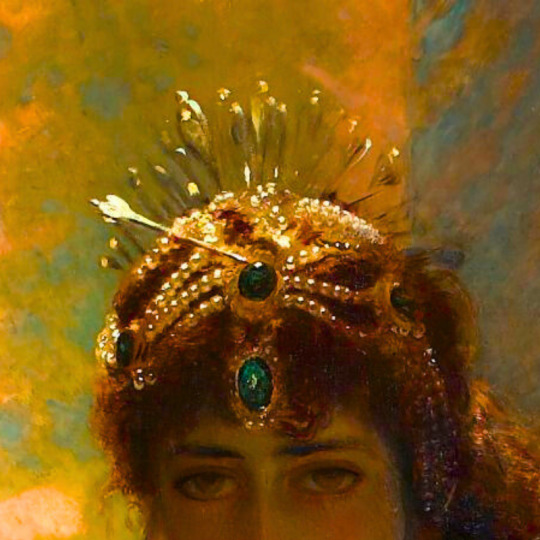
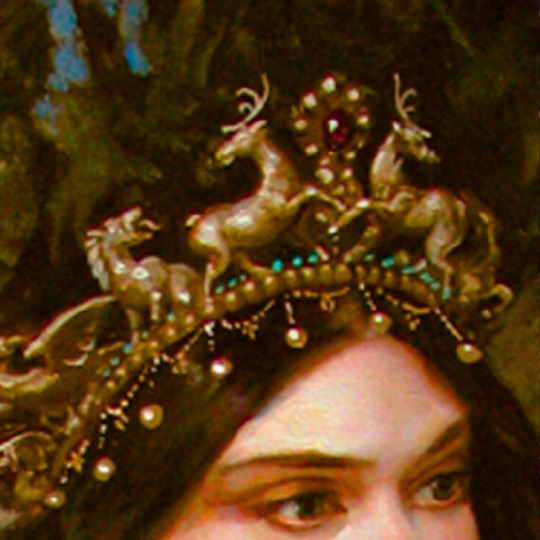
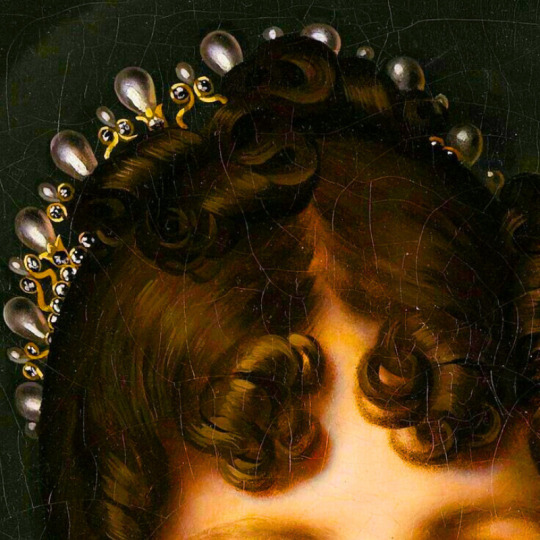
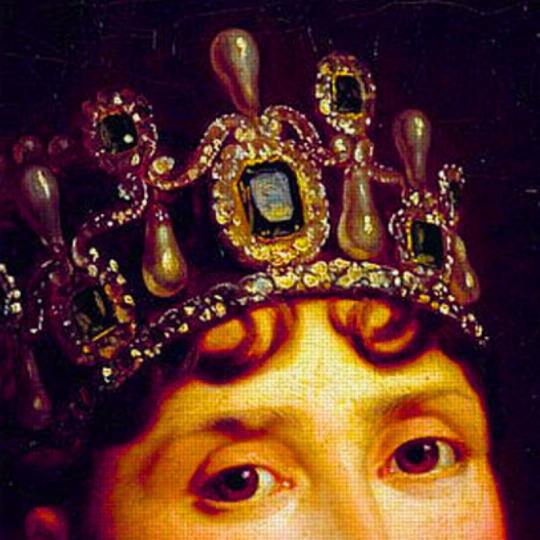
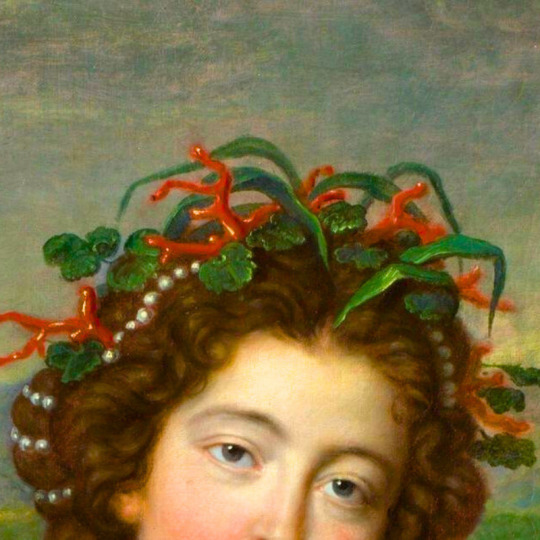
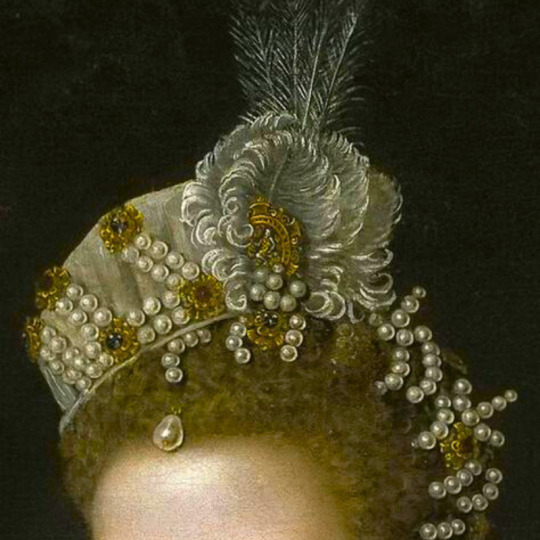
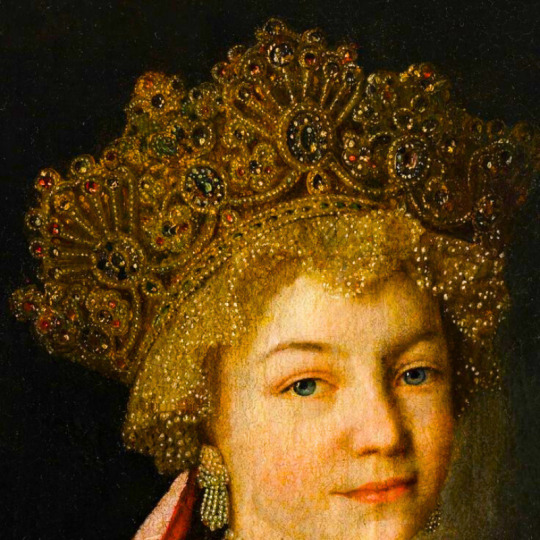
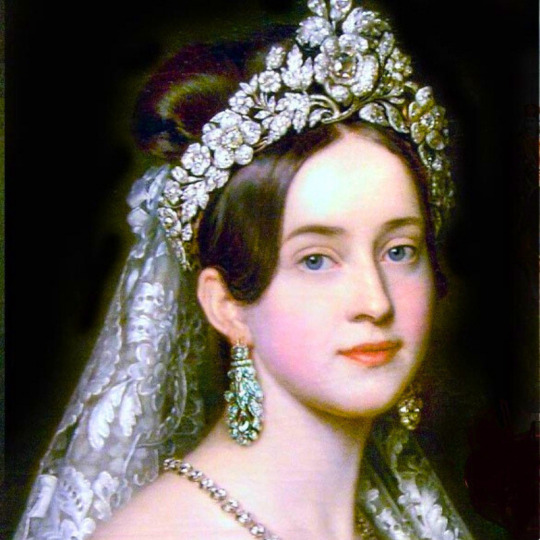
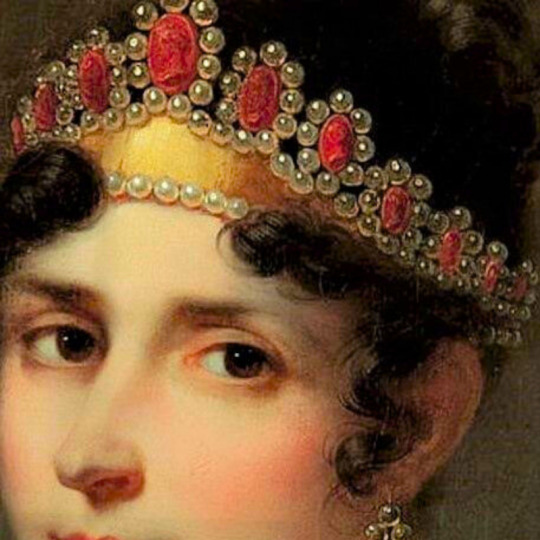
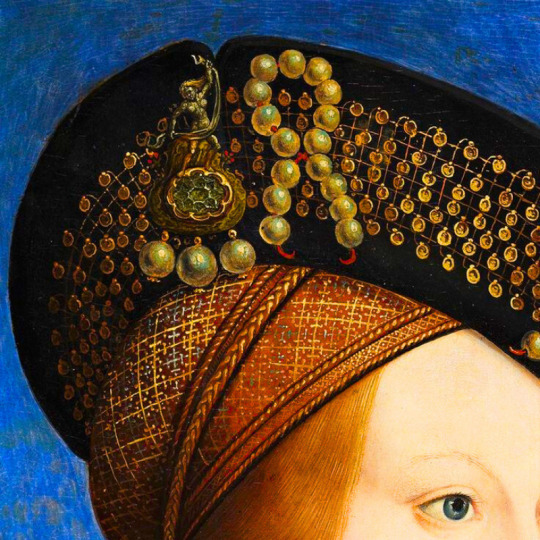
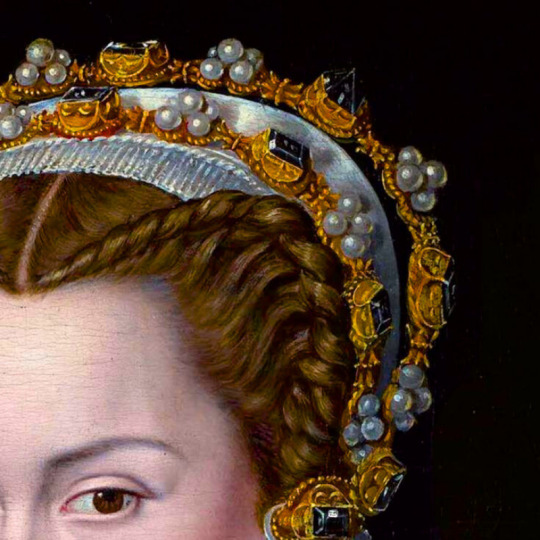
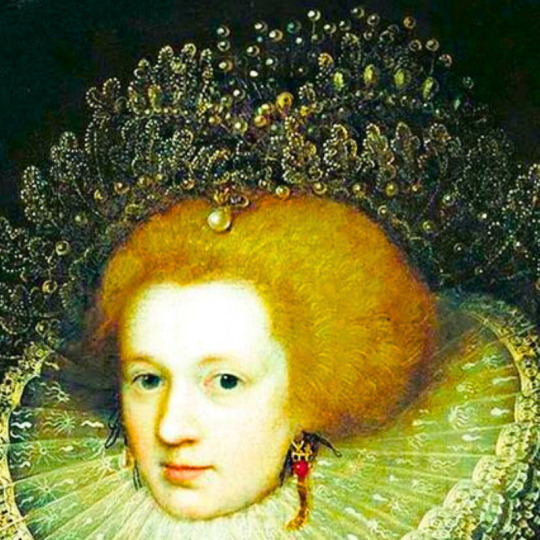

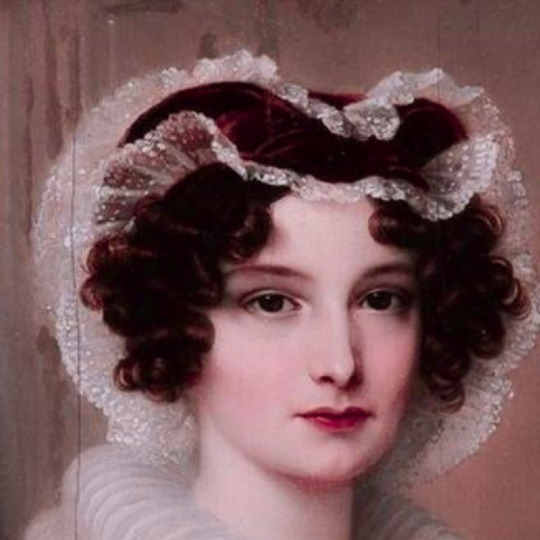
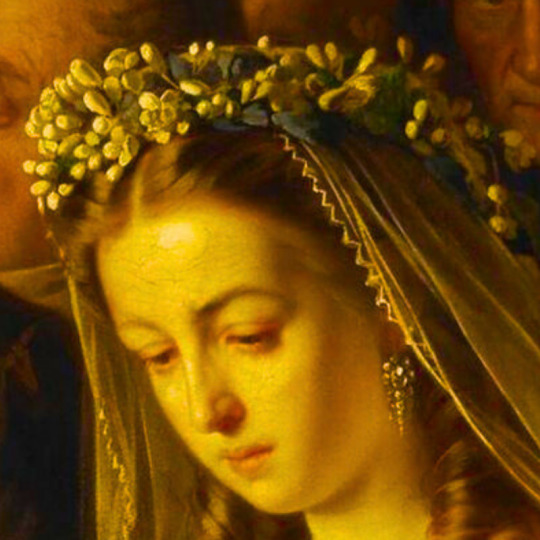
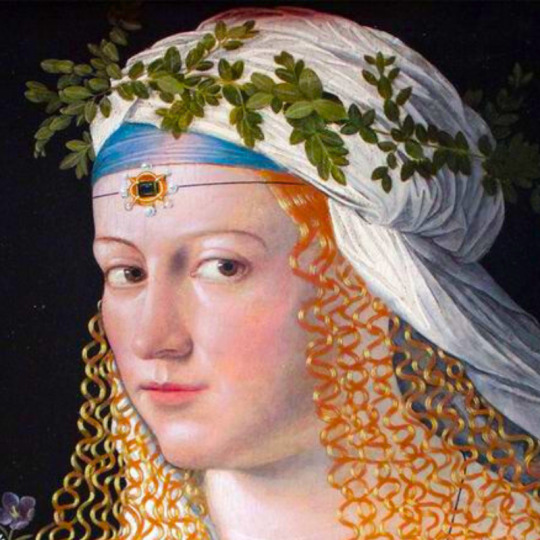
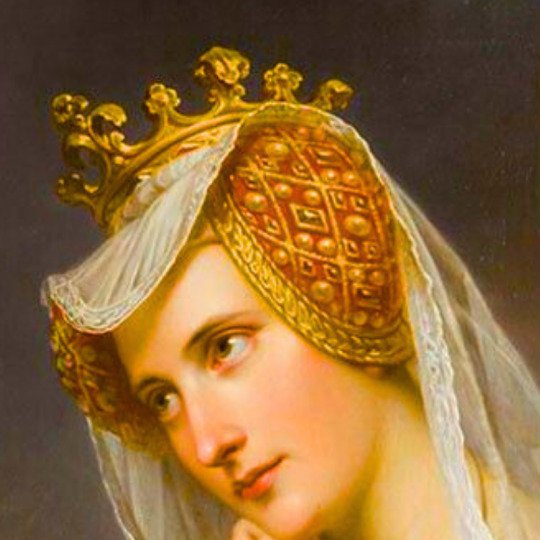
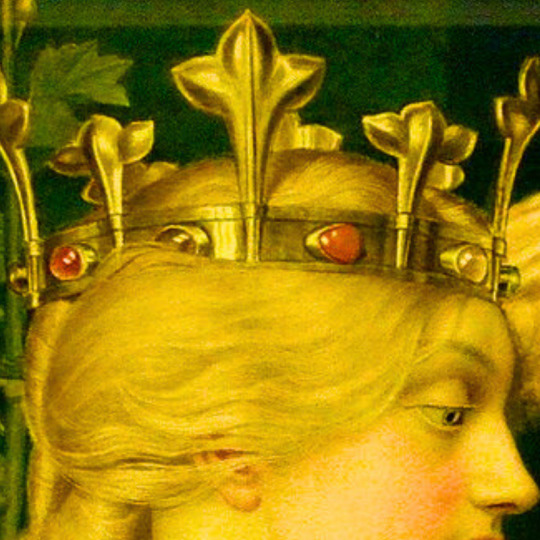
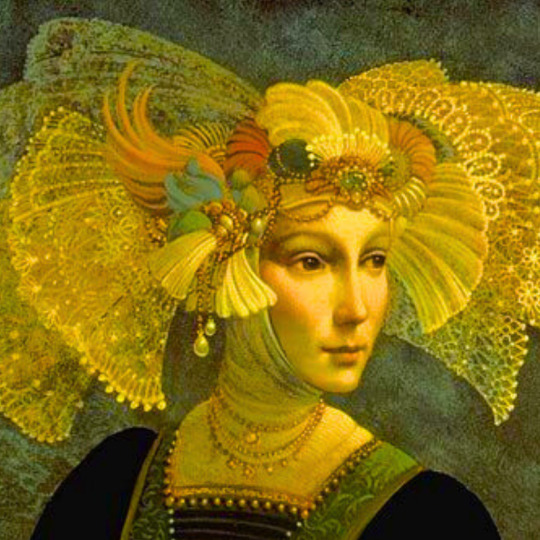
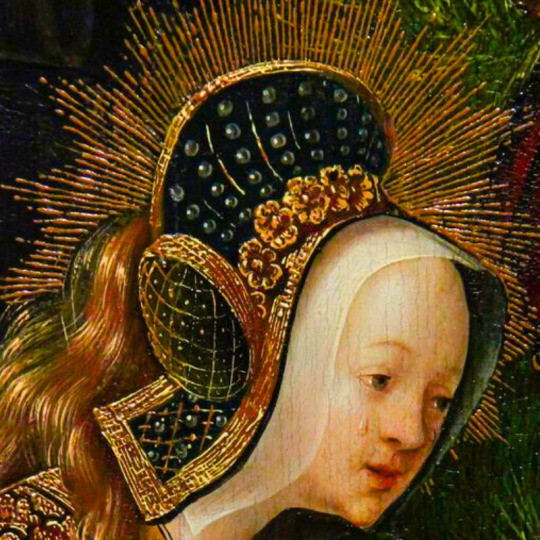

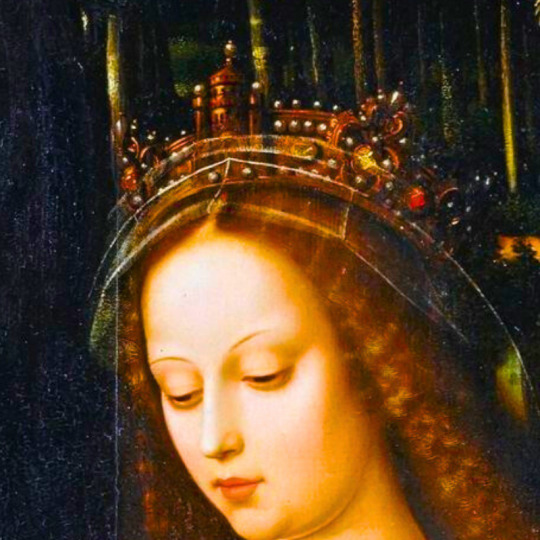
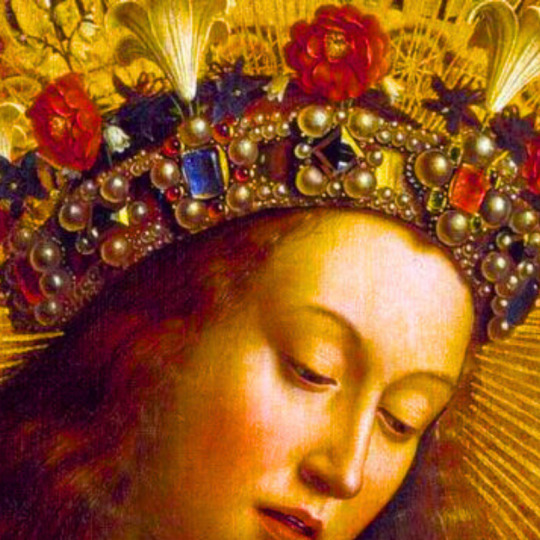
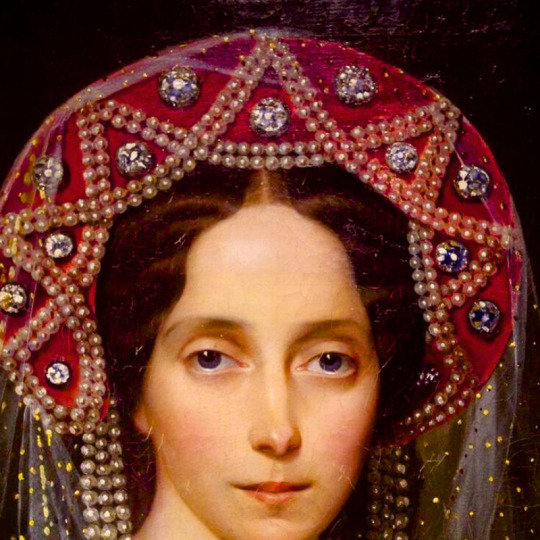


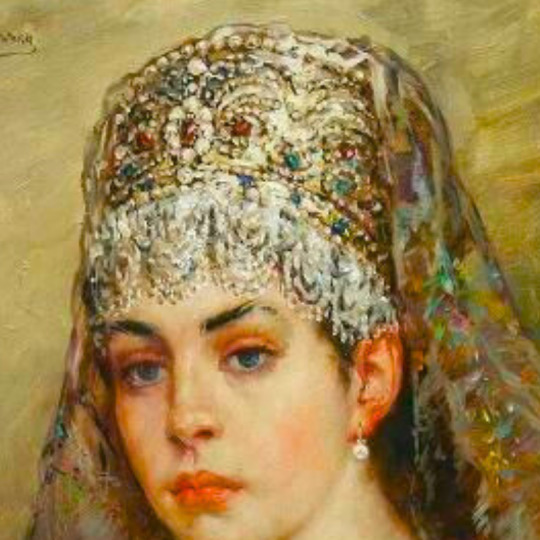
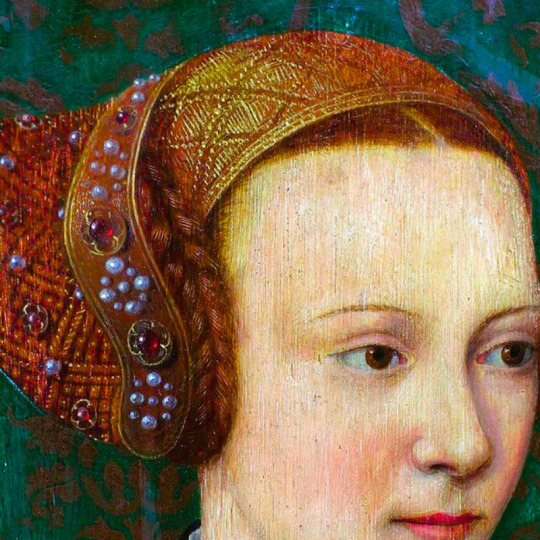
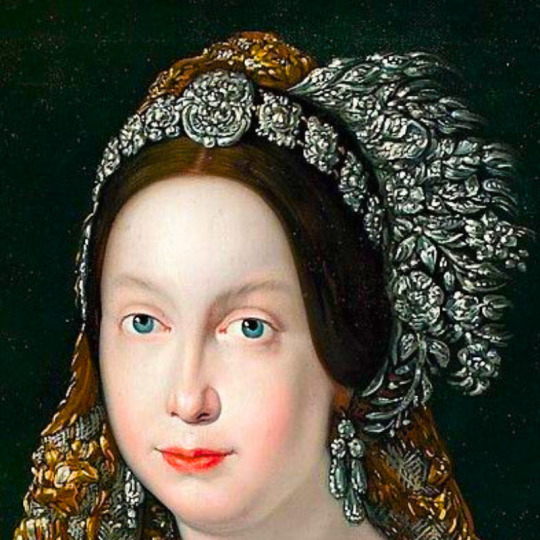
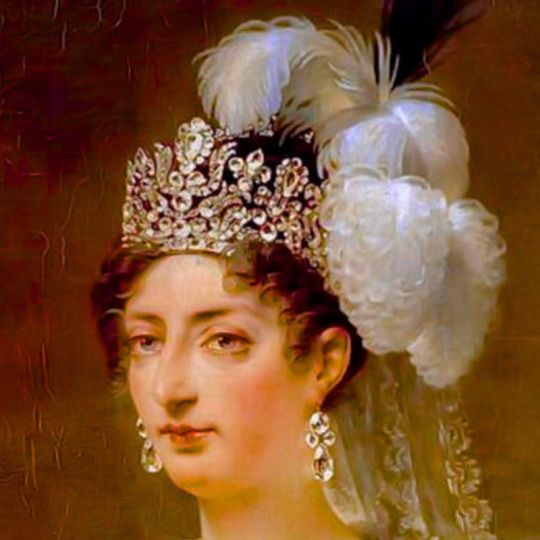
art + hair pieces
#orientatalin by edouard frederic wilhelm richter#cant find this one#this one either its tougher than you think to reverse search them#portrait of josephine de beauharnais by francois gerard#the marquise de seignelay and two of her sons by pierre mignard#infantin isabella clara eugenia at age 13 by alonso sanchez coello#grand duchess alexandra pavlovna romanova of russia but i cant find the artist#marie frederike amalie queen of greece by joseph karl stieler#empress josephine by jean louis viger#queen anna of hungary and bohemia by hans maler#elisabeth of austria by jooris van der straaten#anne wortley by paul van somer#manuela gonzalez velazquez tocando el piano by zacarias gonzalez velazquez#adelingen by heinrich friederich fuger#the unequal marriage by vasili pukirev#idealised portrait of a young women as flora by bartolomeo veneto#a portrait of a noble lady by jan adam kruseman#changing the letter by joseph edward southall#lorelei by james c christensen#the crucifixion by jacob cornelisz van oostsanen#saint dorothy i think this is the title its kinda confusing by i cant find the artist#saint barbara by ambrosius benson#virgin mary by hubert van eyck and jan van eyck#princess maria alexandrovna by ivan makarov#ladies in the blazon room of the winter palace by adolphe ladurner#queen marie therese and her son by charles beaubrun#boyar's wife by konstantin yegorovich#dont know the title but its by barthel bruyn the elder#queen isabella ii of spain by unknown artist#portrait of maria therese charlotte of france by antoine-jean gros
1K notes
·
View notes
Text
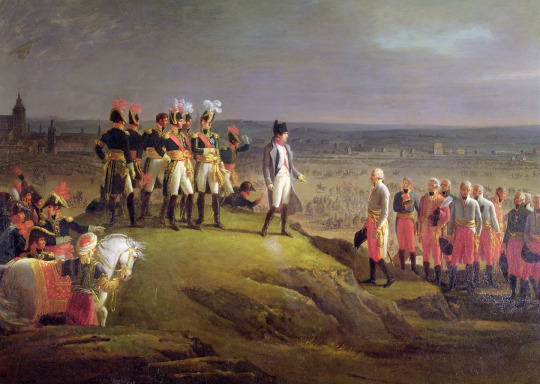
Napoleon accepts the surrender of an Austrian army under General Mack on 20 October 1805 (detail)
by René Théodore Berthon
#napoleonic wars#napoleon#napoléon#bonaparte#napoleon bonaparte#napoléon bonaparte#art#rené théodore berthon#ulm campaign#ulm#germany#emperor#empire#france#french#austria#austrian#habsburg monarchy#holy roman empire#history#europe#european#napoleon i#napoleonic#karl mack von leiberich#soldiers#roustam raza#landscape#marengo#horse
73 notes
·
View notes
Text
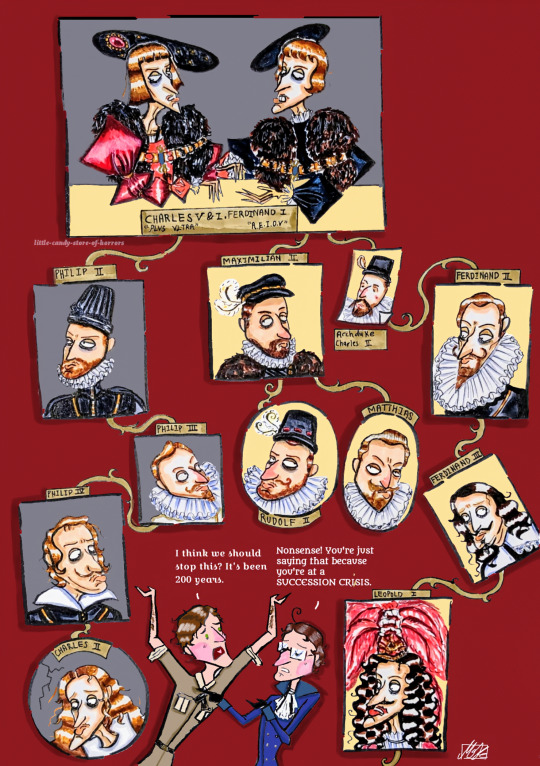
"Bella gerunt alii, tu felix Austria nube!"
Day 6 of @spaus-week 's challenge
"Let others wage war, you, happy Austria, marry!" Was the political strategy of the Habsburgs, and marry did the House of Austria! Infamously, scandalously, sensationally. A mangled wreath of a family tree. We all know this horror story. And we all know the bitter end.
After Emperor Charles V&I divided his Spanish and Austrian inheritance ((also gained through his parents' and grandparents' marriages)) to his descendants and those of his younger brother Ferdinand I respectively, the Habsburg dynasty split into two branches. The Spanish and Austrian Habsburgs notoriously intermarried for generations, right up till Charles II of Spain whose heirless death in 1700 sparked the War of the Spanish Succession. The inbreeding and this informal Latin motto behind it has been blamed to hell and back for their implosion, for the physical ugliness that ran in this royal bloodline. But it is not to say the Habsburgs never went to war, nor that dynastic marriage was a political strategy unique to them! But they were, if anything, bloody successful at it seeing how they did rule half of Europe for 200 years, and then a lot of it in the Austrian line for another 200. Before anyone figured out inbreeding was bad it was considered a privilege to marry into the Habsburgs, with Louis XV claiming that Louis XVI's betrothal to Marie Antoinette was marrying the "Daughter of the Caesars", and Napoleon Bonaparte infamously ditching Josephine for Marie Louise. Charles II was a poor sod who took the fall and the mugs were wretched from the same ugly gene being passed around countless times*, but they did wear power and privilege well.
💅✨ Symbolism bc I'm a NERD and this my Category 10 autism event ✨💅 :
Charles V & Ferdinand I's joint portrait based on that propaganda woodcut, behind them the colours of the Habsburg flag.
The Spanish branch, comprising Charles V & I's descendants, is represented with a black background, and the Austrian branch, comprising Ferdinand I's descendants, gold, both colours pulled from their flag, a dynasty intertwined but split in two.
Round frames denote that the individual had no heirs.
Only the most influential ruler on both sides, the King of Spain and the Holy Roman Emperor, are represented as framed portraits, explaining Archduke Charles II's unframed depiction.
The unconventional placement of Charles II of Spain and Emperor Rudolf II's nameplates are a nod to their queerness: their intersexuality and bisexuality respectively.
Ferdinand III's portrait is lopsided because of the losses of the 30 Years War.
Cracks in Charles II's portrait: 🙃🙃🙃
#Was this just an excuse for me to draw the family tree/wreath? YES. Might continue it to Blessed Karl™ *faints*.#That said i literally took three tries to get the Austrian branch right in just this fraction. Nightmare.#spausweek#Charles v#philip ii#philip ii of spain#Philip iii#philip iv of spain#felipe iv#charles ii of spain#Carlos ii#ferdinand i#Maximilian ii#rudolf ii#Emperor Matthias#Ferdinand ii#Ferdinand iii#Leopold i#16th century#17th century#habsburg history#house of habsburg#austrian history#spanish history#historical hetalia#aph austria#aph spain#roderich edelstein#Antonio Fernandez#Hetalia
71 notes
·
View notes
Note
was there a reason why max didn't adopt an archduke to groom as a successor? not that i imagine any parent would have been happy to be separated from their child a whole ocean away in a shaky monarchy, but it seems like a better idea than showing favour to the previously deposed emperor's family.
He tried to do that too! Quoting Brigitte Hamann in her edition of the diary of Prince Carl Khevenhüller (an Austrian volunteer officer in Mexico):
Besides the Iturbide project there was, by the way, another effort to regulate the matter of the succession. In November of 1865 count Charles Bombelles addressed by order of Maximilian to his younger brother, archduke Karl Ludwig, who had three sons (Franz Ferdinand, Otto and Ferdinand), asking him if he would be willing to “give your approval to adopt one of your sons. The same prince would immediately travel, still in the course of the year 1866, to Mexico, as son and heir of the emperor and the empress of Mexico; and H.I.M the empress Charlotte would go to Vienna to collect him. Her Majesty would bring the necessary court so that from here only a nanny and a doctor should be sent over. In case the emperor Max still has a son, the prince would return to Austria endowed with an income worthy of his position”. Max exposed this wish to his brother “with the justificated hope of not allowing the House of Habsburg to lose the fruits of the gigantic work of an archduke of Austria” (1994, p. 144)
I must correct Hamann here though: in November of 1865 Karl Ludwig only had two sons, the not yet two-years-old Franz Ferdinand and six months-old baby Otto. Unsurprisingly, Karl Luwdig turned down his brother's proposal.
This was around the same time Max made the Iturbide boys princes, which likely means that his plan A was to adopt one of his nephews, and the Iturbides were more of a "backup" plan in case no Habsburg agreed to give his child in adoption. I don't know if he tried again later on; personally I think he may have had more luck had he asked one of his cousins instead.
SOURCE:
Hamann, Brigitte (1994). Con Maximiliano en México. Del diario del príncipe Carl Khevenhüller, 1864-1867 (translation by Angélica Scherp)
10 notes
·
View notes
Text
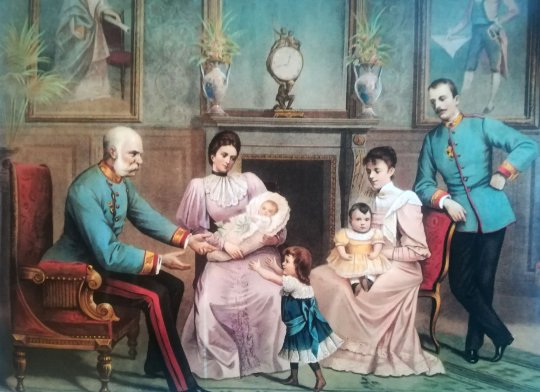
Marie Valerie of Austria with her parents, husband, and three eldest children. Elisabeth is walking towards her grandfather, Franz is in his mother's lap, and newborn Hubert is held by his grandmother, Sisi.
#marie valerie of austria#franz joseph i#elisabeth of bavaria#Elisabeth Franziska of Austria#Archduke Franz Salvator#Archduke Franz Karl Salvator#Archduke Hubert Salvator
32 notes
·
View notes
Text

Blessed Karl of Austria praying.
#my post#uniform#army#emperor#king#emperor of austria#king of hungry#hapsburg#hapsburgs#von hapsburg#charles i#karl i#austro-hungarian empire#austria-hungry#blessed charles of austria#catholic#roman catholic#blessed karl of austria
2 notes
·
View notes
Text

Charles V, Holy Roman Emperor.
#heiliges römisches reich#karl v.#carlos I de españa#haus habsburg#erzherzog#könig von spanien#kingdom of belgium#count of flanders#duke of brabant#holy roman emperor#holy roman empire#charles v#charles I#king of spain#monarquía española#casa de austria#house of habsburg#full length portrait#in armour#full-length portrait#chocolate card#kaiser#der deutschen kaiser#kaisersaal
2 notes
·
View notes
Photo

Madame d’Ora (Dora Kallmus)
Karl I, Kaiser von Österreich in Uniform als Generaloberst
1916
#Madame d’Ora#Dora Kallmus#photography#1916#Karl I#Emperor#Austria#history#ww1#wwi#his expression reminds me of Ringo Starr for whatever reason I'm sorry
52 notes
·
View notes
Text
November 9, the fateful day of the Germans in history
Nov 9, 1313: Battle of Gammelsdorf - Louis IV defeats his cousin Frederick the Fair marking the beginning of a series of disputes over supremacy between the House of Wittelsbach and the House of Habsburg in the Holy Roman Empire
Nov 9, 1848: Execution of Robert Blum (a german politician) - this event is said to mark the beginning of the end of the March Revolution in 1848/49, the first attempt of establishing a democracy in Germany
Nov 9, 1914: Sinking of the SMS Emden, the most successful German ship in world war I in the indo-pacific, its name is still used as a word in Tamil and Sinhala for a cheeky troublemaker
Nov 9, 1918: German Revolution of 1918/19 in Berlin. Chancellor Max von Baden unilaterally announces the abdication of Kaiser Wilhelm II and entrusts Friedrich Ebert with the official duties. At around 2 p.m., the Social Democrat Philipp Scheidemann proclaims the "German Republic" from the Reichstag building. Two hours later, the Spartacist Karl Liebknecht proclaims the "German Soviet Republic" from the Berlin City Palace.
Nov. 9, 1923: The Hitler-Ludendorff Putsch (Munich Beer Hall Putsch) is bloodily suppressed by the Bavarian State Police in front of the Feldherrnhalle in Munich after the Bavarian Prime Minister Gustav Ritter von Kahr announces on the radio that he has withdrawn his support for the putsch and that the NSDAP is being dissolved.
Nov 9, 1925: Hitler imposes the formation of the Schutzstaffel (SS).
Nov 9, 1936: National Socialists remove the memorial of composer Felix Mendelssohn Bartholdy in front of the Gewandhaus concert hall in Leipzig.
Nov 9, 1938: November Pogrom / Pogrom Night ("Night of Broken Glass") organized by the Nazi state against the Jewish population of Germany.
Nov 9, 1939: The abduction of two british officiers from the Secret Intelligence Service by the SS in Venlo, Netherlands, renders the British spy network in continental Europe useless and provides Hitler with the pretext to invade the Netherlands in 1940.
Nov 9, 1948: Berlin Blockade Speech - West Berlin mayor Ernst Reuter delivers a speech with the famous words "Peoples of the world, look at this city and recognize that you cannot, that you must not abandon this city".
Nov 9, 1955: Federal Constitutional Court decision: all Austrians who have acquired german citizenship through annexation in 1938, automatically lost it after Austria became sovereign again.
Nov 9, 1967: Students protest against former Nazi professors still teaching at German universities, showing the banner ”Unter den Talaren – Muff von 1000 Jahren” ("Under the gowns – mustiness of 1000 years", referring to the self-designation of Nazi Germany as the 'Empire of 1000 Years') and it becomes one of the main symbols of the Movement of 1968 (the German Student Movement).
Nov 9, 1969: Anti-Semitic bomb attack - the radical left-winged pro-palestinian organization “Tupamaros West-Berlin” hides a bomb in the jewish community house in Berlin. It never exploded though.
Nov 9, 1974: death of Holger Meins - the member of the left-radical terrorist group Red Army Faction (RAF) financed in part by the GDR that eventually killed 30 people, dies after 58 days of hunger strike, triggering a second wave of terrorism.
Nov 9, 1989: Fall of the Berlin Wall - After months of unrest, demonstrations and tens of thousands escaping to West Germany, poorly briefed spokesman of the newly formed GDR government Günter Schabowski announces that private trips to non-socialist foreign countries are allowed from now on. Tens of thousands of East Berliners flock to the border crossings and overwhelm the border guards who had not received any instructions yet because the hastily implemented new travel regulations were supposed to be effective only the following day and involved the application for exit visas at a police office. Subsequently, crossing the border between both German states became possible vitrually everywhere.
232 notes
·
View notes
Text

Happy Feast Day
Blessed Karl I of Austria (1887 - 1922)
and his spouse, Servant of God Zita of Austria (1892 - 1989)
Emperor and Empress of the Austro-Hungarian Empire
King and Queen of Hungary
Feast Day: October 21
Blessed Charles I or Karl I and Servant of God Zita were the last reigning monarchs of the Austro-Hungarian Empire. He married Zita of Bourbon-Parma in 1911. They were happily married for 11 years yet through the turbulent times of WWI and Karl’s exile. They had 8 children. After Karl’s death, Zita raised her children and served as a symbol of unity for the exiled dynasty. Zita’s and Karl’s hearts are buried together at the Loretto Chapel in Switzerland.
Prints, plaques & holy cards available for purchase. (website)
108 notes
·
View notes
Photo

Karl I proposal for Austria-Hungary
by rexetruriae
On 16 October 1918, Emperor Karl I of Austria and IV of Hungary proclaimed the People's Manifesto, which envisaged to turn the Empire into a federal state of five Kingdoms (Austria, Hungary, Croatia, Bohemia and Polish-Galicia), in an attempt to take into account the aspirations of the Croats, Czechs, Austrian Germans, Poles, Ukrainians and Romanians without affecting the integrity of the lands of the Crown of Saint Stephen.
63 notes
·
View notes
Text

Maximilian II (1527-1576) and His Wife Maria of Spain (1528-1603) and His Children Anna (1549-1580), Rudolf (1552-1612) and Ernst (1553-1595)
Artist: Giuseppe Arcimboldo (Italian, 1526-1593)
Date: c. 1563
Medium: Oil painting
Collection: Kunsthistorisches Museum Vienna, Austria
Description
Maximilian (1527-1576) was the eldest son of emperor Ferdinand I. and Anna of Hungary. In 1548 he married his cousin Maria. Her father Karl V made him governor of Spain. He inherited Bohemia, Hungary and the Austrian countries. In 1564 he was crowned Roman Emperor. Maximilian is shown together with his wife Maria of Spain (1528 - 1603) and his children Anna (1549 - 1580), Rudolf (1552 - 1612) and in the cradle Ernst (1553 -1595).
It is quite clear that the painter Arcimboldo settled down in Vienna in 1563. If the attribution to Arcimboldo rightly exists, he worked with models. According to technical research the painter used a kind of templates. Moreover there are single portraits of Maria, Anna and Maximilian II left.
#painting#portrait#family#maximilian ii#maria of spain#interior#man#woman#children#baby#standing#full length#costume#sword#handkerchief#drapery#classic pillar#family portrait#artwork#oil painting#giuseppe archimboldo#italian painter#italian art#16th century painting#spanish nobility#holy roman emperor#emperor rudolph ii#archduke ernst
21 notes
·
View notes
Text

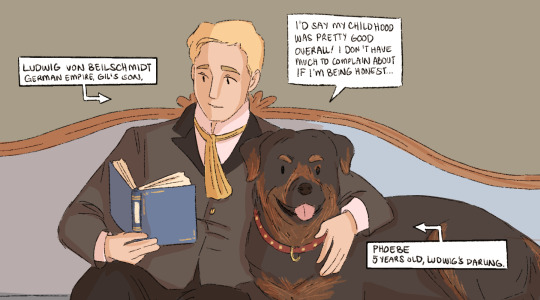

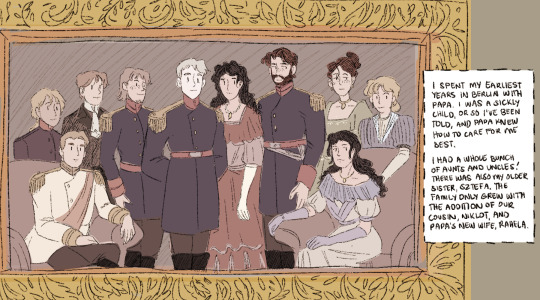

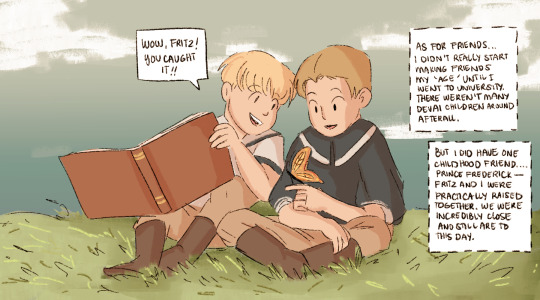
"I was always more of a quiet kid, greatly preferring my books and toys, and the company of those that I was familiar with. I suppose that's why Fritz and I got on well -- We were of the same temperament and had more than a couple shared interests. Being a part of such an unconventional family hasn't always been easy... Especially now that I'm more grown and am more aware of tensions brought about by politics and the like. But I wouldn't change it for the world."
Portrait descriptions under the cut!!
Portrait 1: The Berlin Family, painted in more recent times.
(L to R Back) Otto (Order of St. John), Niklot (Reiner's son, Neubrandenburg), Konrad (Berlin), Gilbert (Prussia), Rahela (Gilbert's wife, Romania), Reiner (Brandenburg), Ilse (Potsdam), Johanna (Koenigsberg), (L to R Front) Ludwig (German Empire), Sztefa (Silesia) - Gilbert and Rahela were wed in 1866, after Prince Karl of Hohenzollern-Sigmaringen came to the Romanian throne as King Carol I of Romania. The marriage is purely political, but the two maintain a cordial and warm friendship. much to Erzsi's dismay - Niklot is Reiner's son, born from a human lover he had before the 30 Years War. Father and son were only recently reunited in the 1820s. - Sztefa is Gilbert's adopted daughter, taken in during the First Silesian war, and raised in part by Frederick II. Served in the volunteer corps during the Napoleonic era disguised as a man. Is Ludwig's scary lesbian older sister.
Portrait 2: The Vienna family, painted c. 1830s.
(L to R Back) Erzsebet (Hungary), Sztefa, Anneliese (Vienna), Roderich (Austria) (L to R Front) Ludwig, Gilbert - Roderich may be bonded to Austria, but his sister Anneliese, who embodies the capital, takes more of a leading role when it comes to government matters.
#answered#ask19thcenturydoctorgilbert#hetalia ask blog#reboot#hws prussia#gilbert beilschmidt#hws germany#ludwig beilschmidt#hws ocs#hws brandenburg#hws berlin#hws potsdam#hws konigsberg#hws hungary#hws austria#hws nyo austria#good LORD thats a lot to tag dsjkksd#welp welcome to lud's crazy family#there's so much tea and drama bubbling under the smiley surface
162 notes
·
View notes
Text

The Ducal Wittelsbach family and their relatives, early 1890s. From left to right, standing: Karl Theodor, Duke in Bavaria, Duchess Elisabeth in Bavaria, Archduchess Elisabeth Amalie of Austria, Duchess Sophie Adelheid in Bavaria, Archduchess Maria Annunziata of Austria, Princess Maria Immacolata of Bourbon-Two Sicilies, Duchess Marie Gabrielle in Bavaria.
Sitting: Archduchess Maria Teresa of Austria (née Infanta of Portugal), King Francesco II of the Two Sicilies, Queen Marie Sophie of the Two Sicilies (née Duchess in Bavaria)
Via As Infantas de Bragança e a Sua Descendência - História das Filhas de D. Miguel by Dativo Salvia Ocaña
#look what i found completely by chance! the quality isn't very good because it's from the book's preview#francesco died in december of 1894 so the picture is from before that date#but definetly 1890s because. puff sleeves#(also the author misidentifies maria teresa as her sister maria josé and maria annunziata as mathilde countess of trani)#karl theodor duke in bavaria#queen elisabeth of the belgians#elisabeth amalie of austria princess of liechtenstein#sophie in bavaria countess of toerring jettenbach#archduchess maria annunziata of austria#maria immacolata of bourbon-two sicilies princess of saxony#marie gabrielle in bavaria princess of bavaria#maria teresa of braganza archduchess of austria#francesco ii of the two sicilies#queen marie sophie of the two sicilies#house of wittelsbach#house of bourbon two sicilies#house of braganza
27 notes
·
View notes
Text

An engraving showing Francis I, Emperor of Austria, and his second wife, Maria Theresa of Naples and Sicily, walking with nine of their twelve children.
On the left of their parents are: Marie Caroline, Johann Nepomunk, Maria Clementina, and Ferdinand. To their right are Marie Louise, Franz Karl, Joseph Franz, Maria Leopoldina, and Marie Anne.
Missing are two daughters, Marie Caroline and Caroline Ludovika, who died in childhood. It's dated to 1807, which means Maria Teresa was pregnant with her 12th child at the time. She gave birth to a daughter, Amalie Theresa, on April 6th of that year. The baby only lived for three days, and she would die a few days after her daughter.
Two other children would also die young. Joseph Franz died aged 8, of what was likely an outbreak of yellow fever, two months after his mother. Johann Nepomuk died two years later, aged 3, of unknown causes.
#francis i#maria teresa of naples and sicily#marie louise of austria#Marie Caroline of Austria#Archduke Johann Nepomuk#Maria Clementina of Austria#ferdinand i#archduke franz karl#archduke joseph franz#Maria Leopoldina of Austria#Marie Anne of Austria#house of habsburg lorraine#austria#long live the queue
24 notes
·
View notes
Text

Blessed Charles I of Austria.
#my post#uniform#army#emperor#king#emperor of austria#king of hungry#hapsburg#von hapsburg#charles i#karl i#blessed charles of austria#catholic#roman catholic#blessed karl of austria
4 notes
·
View notes